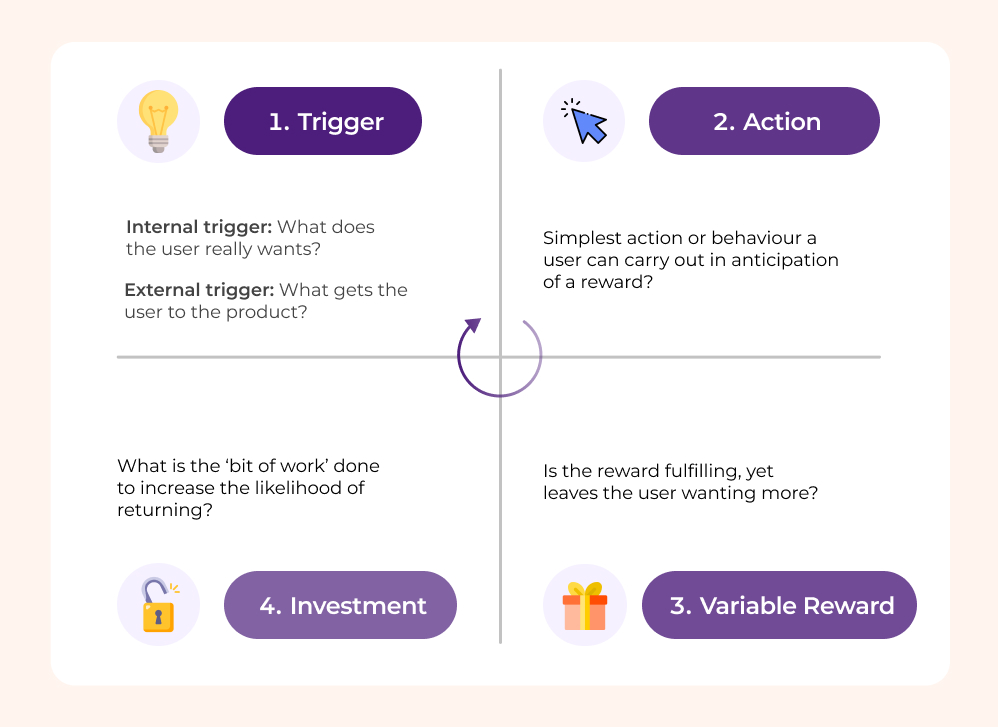From Swipe to Habit: The Psychology Behind Your Screen Time

In today’s digital age, the bond between humans and technology, particularly smartphones, has intensified. This is not a fleeting trend but a clear indication of growing dependency on our devices, becoming an integral part of our daily lives. To grasp the extent of this addiction, consider these statistics:
- Yearly increase: Australians average daily phone usage rose to 5.67 hours, up from 5.5 hours the previous year.
- Lifetime impact: This trend implies that we might spend approximately 17.25 years of our lives glued to our phones
- Frequency of checking: On average, phones are check about 7.8 times per hour, equating to almost every eight minutes.

As a product designer who is deeply involved in this digital world, I’ve observed how this attachment to technology is meticulously crafted and designed. Whether its streaming giants like Netflix, social media platforms such as Instagram and TikTok, online banking, or immersive games, the digital work seems to be consistently competing for our attentions.
Earlier this year, I found myself frequently caught in a vortex of endless digital scrolling and online entertainment. It wasn't until I checked my screen time that I realised the extent of time I spent in these behaviours, leading to a surprising revelation about the power these digital products held over me. This prompted me to dive into neuroscience and psychology for answers, where I learned about what cognitive psychologists define as a "habit": those automatic, almost subconscious actions triggered by familiar cues. This understanding propelled me to explore further the psychology underlying these digital habits.
I discovered that the design strategies used by companies to weave their products into our daily lives are both strategic and intentional. Their goal is not only to attract users but to make their products an indispensable part of our routines.
This brought me to the Hook Model, a framework developed by Nir Eyal, which sheds light on the methods used to create addictive digital experiences. It provides insights into designing products that are not merely used but become a crucial part of our everyday lives. The Hook Model is a powerful tool, but it must be used ethically, ensuring that products are engaging without exploiting users.
Understanding the Underlying Mechanisms
To apply the Hook Model effectively, one must comprehend the underlying mechanisms of the human brain, especially the primitive or reptilian brain, which governs basic urges like hunger, fear, and pleasure. Recognising this aspect is crucial for developing habit-forming products.
Several factors are key:
- Reward Systems: Our brain's reward circuits, linked to survival instincts, drive us to seek food, safety, and social connection. Modern products tap into this by providing immediate rewards, such as feedback or virtual badges, stimulating these circuits and reinforcing behaviours that mimic fundamental pursuits.
- Avoiding Pain: We naturally seek pleasure and avoid discomfort. Products that resolve a problem or relieve an inconvenience are more likely to retain users.
- Social Craving: The primitive mind craves social validation and belonging. Products that offer social interaction opportunities, like likes, shares, or comments, directly appeal to this desire.
Decoding the Hook model
Let's break it down the Hook Model with an example:
- Trigger: This is what starts the behaviour. Imagine a notification on your phone from a social media app. That's an external trigger. Over time, you might start checking the app without a notification, due to a thought or feeling – that's an internal trigger.
- Action: This step involves using the product. For example, after seeing the notification, you open the social media app and start scrolling through your feed. The action should be simple and must promise a reward, like finding interesting posts or updates from friends.
- Variable Reward: This is the reward you get from the action, which should be unpredictable to keep it exciting. In our example, as you scroll through your social media feed, you don't know what kind of posts you'll see next – a funny video, a news update, or a friend's photo. This uncertainty makes the experience addictive, just like how slot machines work.
- Investment: After experiencing the reward, you are encouraged to invest something into the product, making you more likely to return. For social media, this investment could be posting your own content, engaging with others' posts, or adjusting your profile. These investments create a sense of ownership and increase the likelihood of you using the app again.

Implementing the Hook Model
Creating habit-forming products involves several strategic considerations, which, when implemented effectively, can lead to products that are both engaging and beneficial to users. Here are some refined strategies to consider:
- Deeply Understand Your Audience: It's crucial to conduct thorough research to fully understand your target audience's core motivations, challenges, and values. This understanding will guide the creation of a product that resonates deeply with users.
- Design for the Primitive Mind: Your product should offer immediate satisfaction, incorporate elements of gamification, address real-world problems, and enhance social connections. Tapping into these basic human desires ensures a more engaging and rewarding user experience.
- Strategic Implementation of the Hook Model: Integrate the Hook Model's four phases into your product's design, constantly evolving it based on user feedback, customer data, and observed behaviours. This iterative process ensures that the product remains relevant and appealing.
- Analysing Competitor Strategies: Evaluate the habits formed by your competitors with their users. Identify opportunities where you can introduce novel features or services that could shift user habits towards your business, offering a fresh alternative to existing options.
By aligning the Hook Model's principles with ethical design practices, we create products that are not only captivating and habit-forming but also respectful and advantageous for users. This approach allows us to leverage the power of habitual technology use in a way that enriches, rather than diminishes, our life's quality.





